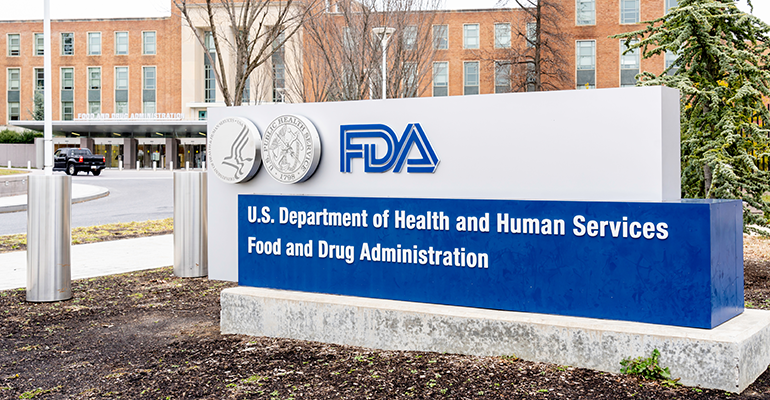News
FDA proposes a new definition of ‘healthy’
3 Oct 2022
Products that exceed limits for sugar, salt, and fat will not be eligible to make a ‘healthy’ claim, under a proposed definition of healthy by the US Food and Drug Administration (FDA).
The regulatory agency also has announced plans to launch a front-of-pack label.
Under the proposed definition, more foods would be eligible to display the “healthy”’ claim. Therefore, the new rule could see items such as higher-fat fish like salmon, nuts and seeds, certain oils, and water on the list of “healthy” foods.

Food products must also satisfy several conditions to feature a “healthy” claim label. The item needs to contain a specific, meaningful amount of food from at least one of the food groups or subgroups the dietary guidelines recommend. Fruit, vegetables, and dairy are examples of these food groups.
Additionally, the food product must comply with definite limits for certain nutrients, such as added sugars, saturated fat, and sodium. Food manufacturers will need to examine the threshold for these limits, which is based on a percent of the DV for the nutrient and varies depending on the food and its group.
In proposing its new rationale to update the meaning of “healthy” on its food products, the FDA seeks to empower consumers with better nutritional understanding, enhance consumer diets and lower chronic diseases.
The Department of Health and Human Services’ (HSS) federal agency has published a modified list of criteria detailing when food labels can display the nutrient content claim “healthy” on their packaging. In developing its new proposed rule, the FDA says it wants to create a consistent definition and understanding of “healthy” that aligns with existing and current nutrition science.
Improve nutrition and reduce health risks
In the US today, over 80% of consumers are eating insufficient amounts of fruit, vegetables and dairy, the FDA states. In addition, most consumers opt for excess added sugars, saturated fat and sodium in their food choices.
The FDA’s rule is in direct response to these nutritional habits. It seeks to help US consumers enhance their dietary patterns, decrease the onset and impact of chronic disease and progress health equity, the FDA says. “Nutrition is key to improving our nation’s health,” said Xavier Becerra, secretary of the HHS.
Updating the definition of “healthy” for the US food industry follows the White House Conference on Hunger, Nutrition, and Health, which the FDA took part in on the 28th September 2022. The event is part of the country’s newly-released national strategy, which aims to end hunger, improve nutrition and physical activity, decrease diet-related diseases, and end disparity gaps by 2030.
 © AdobeStock/littlewolf1989
© AdobeStock/littlewolf1989
Next steps
One of the agency’s upcoming planned actions is to develop a front-of-package (FOP) labelling system. The new system aims to enable food manufacturers to efficiently and more easily communicate nutrition information.
The FDA strives to empower consumers by providing more informative labelling and education, including tailored messages and education for racial and ethnic minority groups, to help consumers identify foods that can contribute to healthier diets, its spokesperson says.
In October 2021, the FDA released nutrition guidance encouraging food manufacturers to voluntarily lower the amount of sodium in processed and packaged foods. The FDA is now also focusing on its nutrition initiatives, including issuing revised, lower voluntary sodium reduction targets, exploring recommendations for online shopping labelling and providing clarity around plant-based milk alternatives labelling.
The FDA will have a public meeting to explore future steps the federal government can take to help lower added sugar consumption. It will also publish further education and outreach initiatives to help improve maternal, infant and child health by promoting healthy dietary patterns while reducing exposure to toxic elements to help set the foundation for long-term health, the spokesperson says.
The agency issued a proposed rule for stakeholders to review and provide comment on. “Any final rule established by the agency will become effective 60 days after the date of the final rule’s publication in the Federal Register, with a proposed compliance date three years after the effective date,” says the spokesperson. The timeframe aims to provide the industry time to revise labelling to come into compliance with the new requirements. Additionally, the FDA is also requesting comment on the proposed compliance date.
Impact on US food manufacturing industry
The new definition of “healthy” food is anticipated to cultivate a healthier food supply. “Manufacturers can voluntarily choose to use the claim ‘healthy’,” says the FDA spokesperson.
Food manufacturers can contribute by reformulating their product ranges to include more vegetables and whole grains, for example, to meet the newly updated criteria. Producers can also launch new formulations that satisfy the “healthy” definition from the outset.
Consumers want to identify healthy foods easily. To meet this expectation, the agency is looking into creating a symbol for food packaging that manufacturers can implement to indicate that their product meets the “healthy” claim definition.
